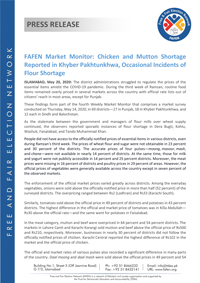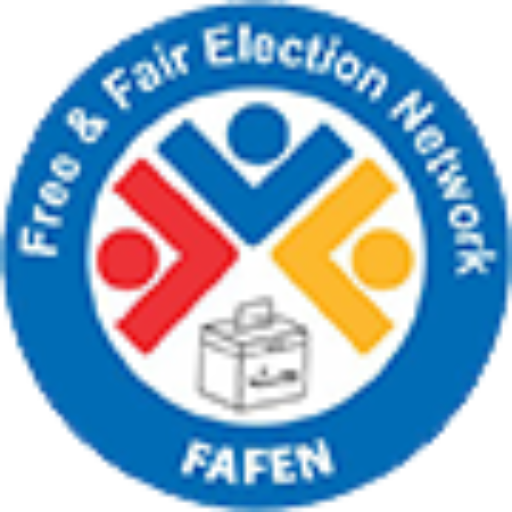ISLAMABAD, May 20, 2020: The district administrations struggled to regulate the prices of the essential items amidst the COVID-19 pandemic. During the third week of Ramzan, routine food items remained overly priced in several markets across the country with official rate lists out of citizens’ reach in most areas, except for Punjab.
These findings form part of the fourth Weekly Market Monitor that comprises a market survey conducted on Thursday, May 14, 2020, in 69 districts—27 in Punjab, 18 in Khyber Pakhtunkhwa, and 12 each in Sindh and Balochistan.
As the stalemate between the government and managers of flour mills over wheat supply continued, the observers reported sporadic instances of flour shortage in Dera Bugti, Kohlu, Washuk, Faisalabad, and Tando Muhammad Khan.
People did not have access to the officially notified prices of essential items in various districts, even during Ramzan’s third week. The prices of wheat flour and sugar were not obtainable in 23 percent and 30 percent of the districts. The accurate prices of four pulses—moong, masoor, mash, and chana—were not available in nearly 14 percent of districts. At the same time, those for milk and yogurt were not publicly accessible in 14 percent and 25 percent districts. Moreover, the meat prices were missing in 16 percent of districts and poultry prices in 29 percent of areas. However, the official prices of vegetables were generally available across the country except in seven percent of the observed markets.
The enforcement of the official market prices varied greatly across districts. Among the everyday vegetables, onions were sold above the officially notified price in more than half (52 percent) of the surveyed districts. The overpricing ranged between Rs2 (Lodhran) and Rs33 (Karachi South).
Similarly, tomatoes sold above the official price in 49 percent of districts and potatoes in 43 percent districts. The highest difference in the official and market price of tomatoes was in Killa Abdullah—Rs30 above the official rate—and the same went for potatoes in Faisalabad.
In the meat category, mutton and beef were overpriced in 64 percent and 54 percent districts. The markets in Lahore Cantt and Karachi Korangi sold mutton and beef above the official price of Rs500 and Rs210, respectively. Moreover, businesses in nearly 30 percent of districts did not follow the officially notified prices of chicken. Karachi Central reported the highest difference of Rs102 in the market and the official price of chicken.
The official and market rates of various pulses also recorded a significant difference in many parts of the country. Daal moong and daal mash were sold above the official prices in 49 percent and 54 percent of the districts. Daal moong was Rs150 above the officially notified rate in a Nowshera market and daal mash Rs125 more than the official price in a market in Abbottabad. The market prices of daal masoor and gram varied from the official prices in around 51 percent and 45 percent of the districts. Daal masoor was sold at Rs95 above the officially notified rate in a Bannu market with gram Rs85 above the official price in a market of Loralai.
Refined sugar and wheat flour were sold above the official rates in 36 percent and 38 percent districts. A 20-kilogram wheat flour bag was sold Rs200 above the official price in Killa Abdullah, and refined sugar Rs19 more than the market price in Abbottabad.
The market rates of eggs per dozen were above the officially notified prices in 38 percent districts. At the same time, the milk and yogurt prices were higher than the official rates in 42 percent and 36 percent of the observed districts.
TDEA-FAFEN generates the weekly market monitors covering 15 essential kitchen items, including groceries such as wheat, pulses, oil, sugar, and perishable commodities like meat, and vegetables. It does this considering the need for an independent and regular assessment of the availability of such items.
The observers obtained the official prices from the officials of district administrations, or market committees, and collected the wholesale prices through market surveys. In the case of Punjab, the government price app ‘Qeemat Punjab’ was also used to get the official rates.




